How can companies increase data transparency in the workplace? Transparency connects employees with relevant data that empowers them to achieve and exceed company goals.
For example, a health insurance company wants to easily share call data with the customer representatives in their Billing department to engage and motivate them to reach company targets. The company wants to display the most important key performance indicators (KPI’s) in real-time on big screens in prominent areas of the workplace.
With Nextiva Voice Analytics, companies can collect and display real-time data for relevant performance metrics. Customize the scorecard to view the call data for select users.
Visit nextiva.com, and click Client Login to log in.
If logging in from Nextiva Voice (purchased before Dec 2020), select Voice > Analytics.
If logging in from NextOS (purchased after Dec 2020), select Communication > Phone System > Voice Overview > Go to Analytics.
On the Nextiva Voice Analytics Home Page, click the Monitor tile or select Monitoring in the top menu bar.
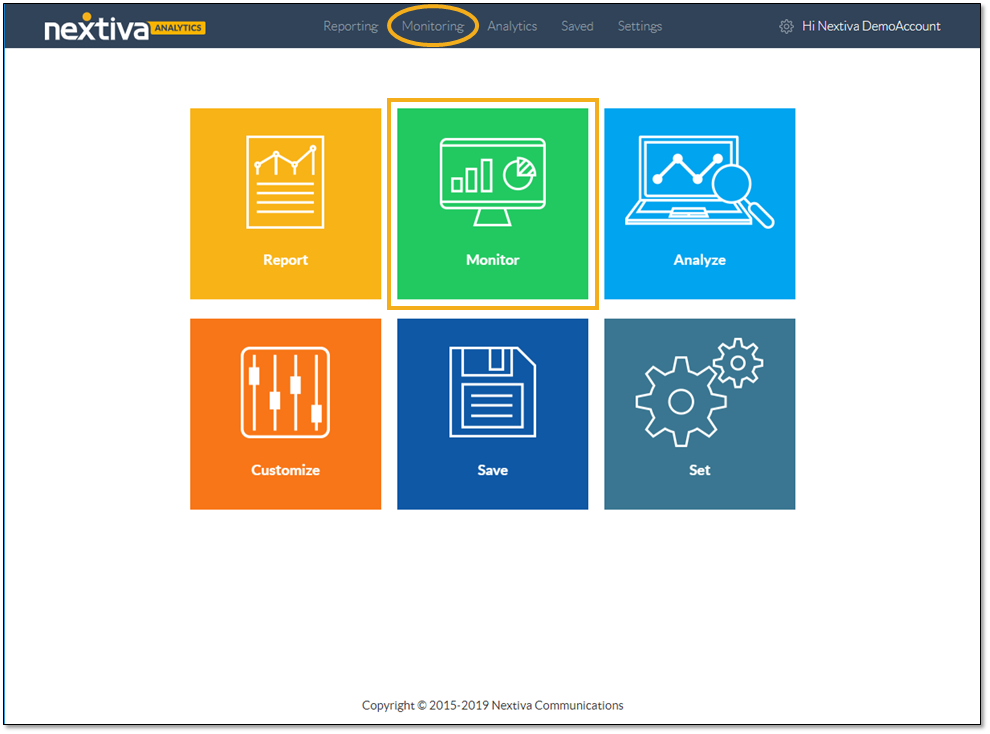
On the Scorecards tab, customize the scorecard:
- Select the desired time range.
- Click the Slider icon to open the configurator.
- Click Swap to toggle between two table views.
- Click Export to download the data as a .csv file.
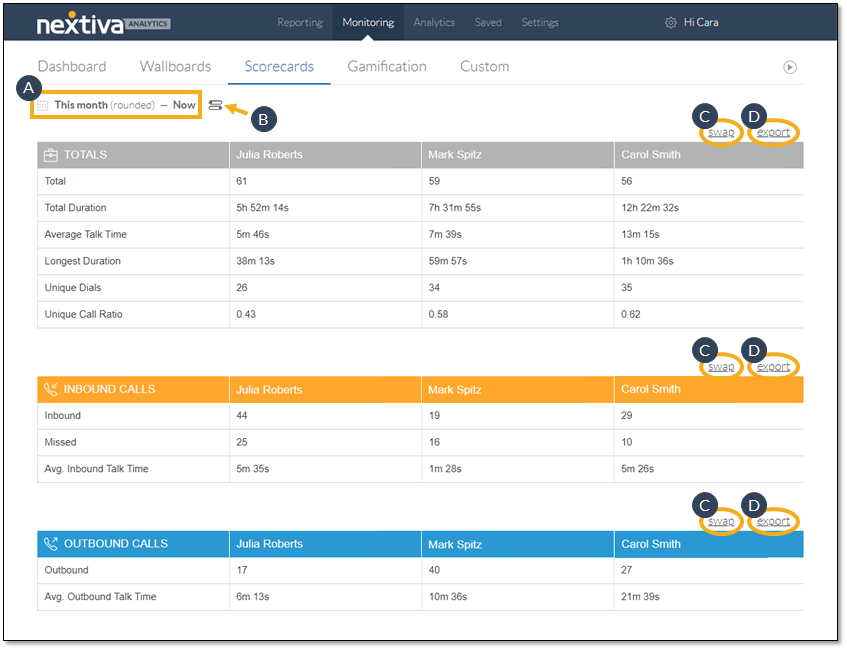
The configurator includes three tabs for customizing the scorecard: Scorecard Type, Filter, and Time Breakdown.
The Scorecard Type tab presents the options for the type of information to display on the scorecard: Users, Locations, Call Groups, and Custom Groups, if any have been created.
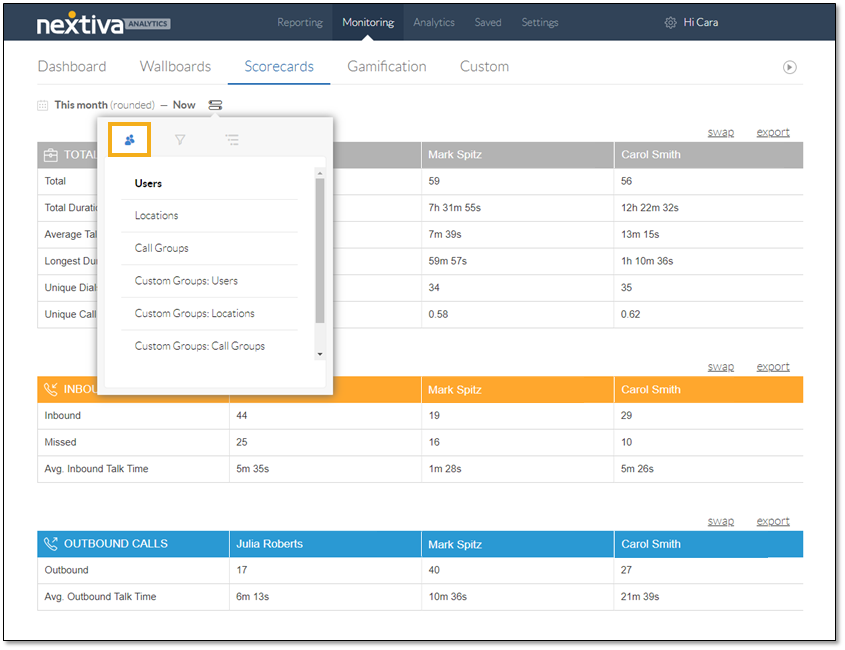
Refine the data to display on the scorecard, based on the scorecard type. For example, after selecting Users on the Scorecard Type tab, select specific Users on the Filters tab.
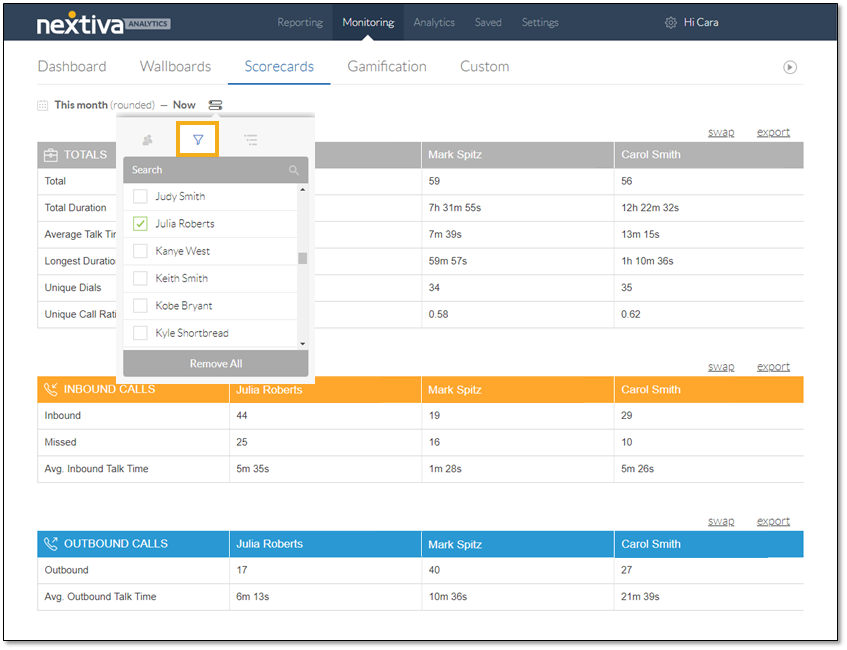
On the Time Breakdown tab, click to specify the breakdown of the data by time: Summary, Daily, Weekly, Monthly, or Quarterly.
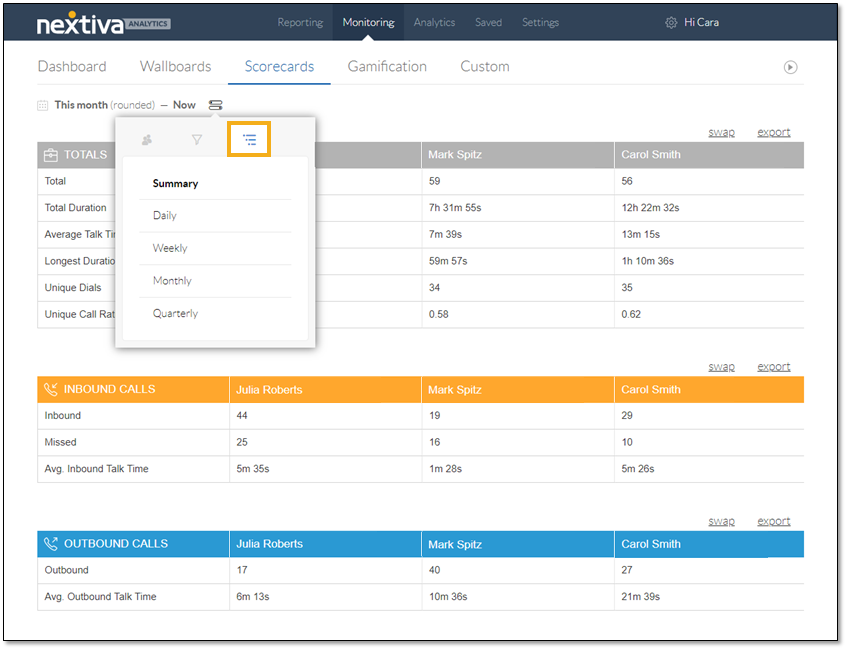
The analytics scorecard displays call data for each of the selected Users. Organizations can display this information in the workplace to increase transparency, which encourages communication and accountability.
When companies create data transparency in the workplace, they foster a cooperative culture in which employees feel engaged and possess the information to drive performance results. Also, with quick and easy access to critical information, companies can proactively identify trends, issues, and successes so they can take appropriate action. They can execute contingency plans. They can recognize and reward achievements. Transparency in the workplace creates an open and communicative environment that breeds a collective effort toward the success of the company.